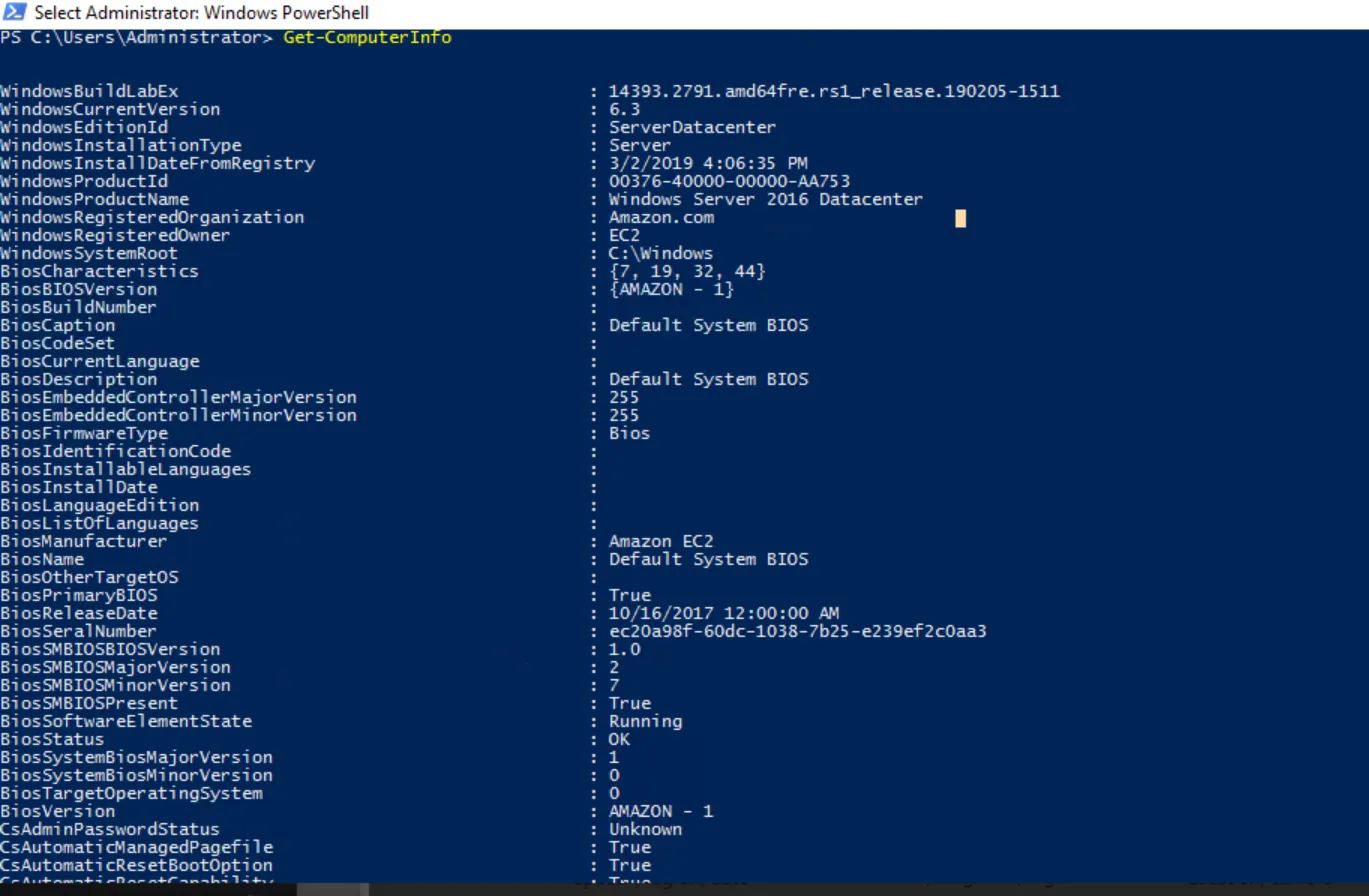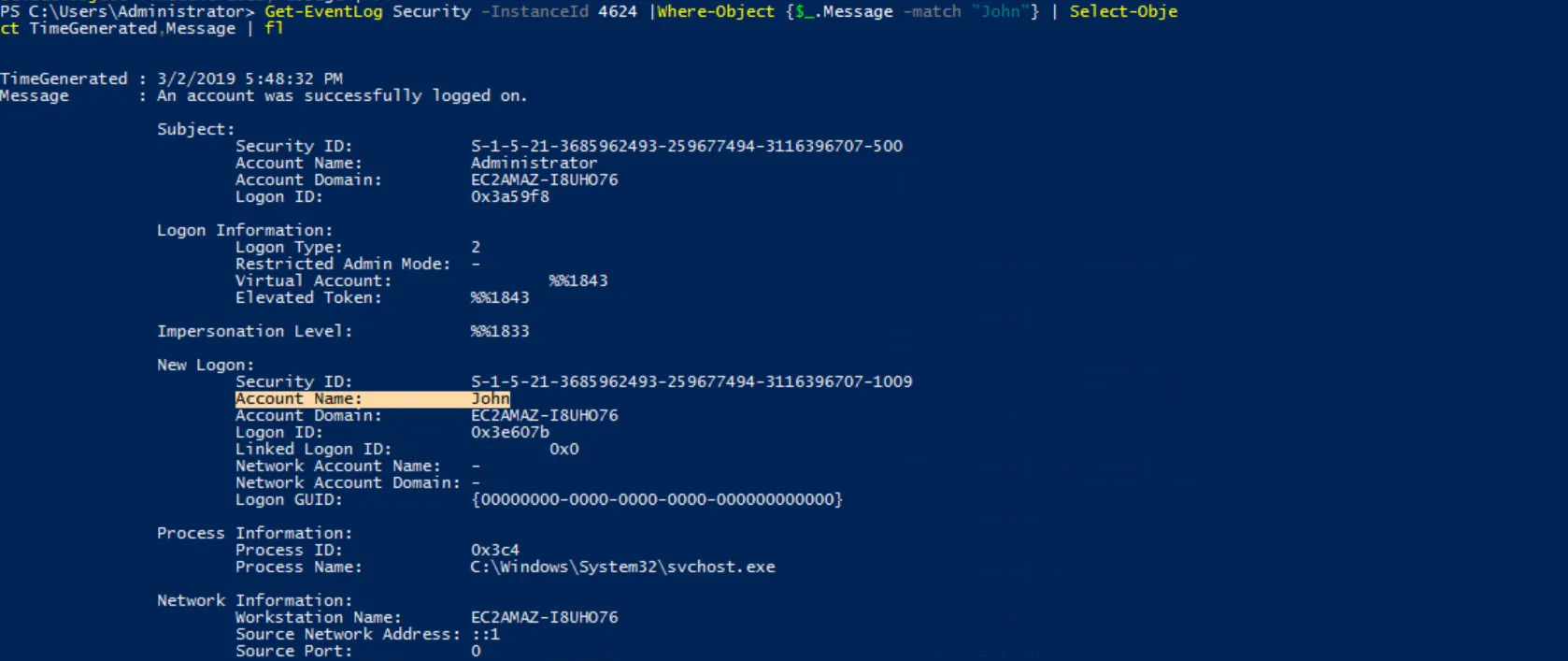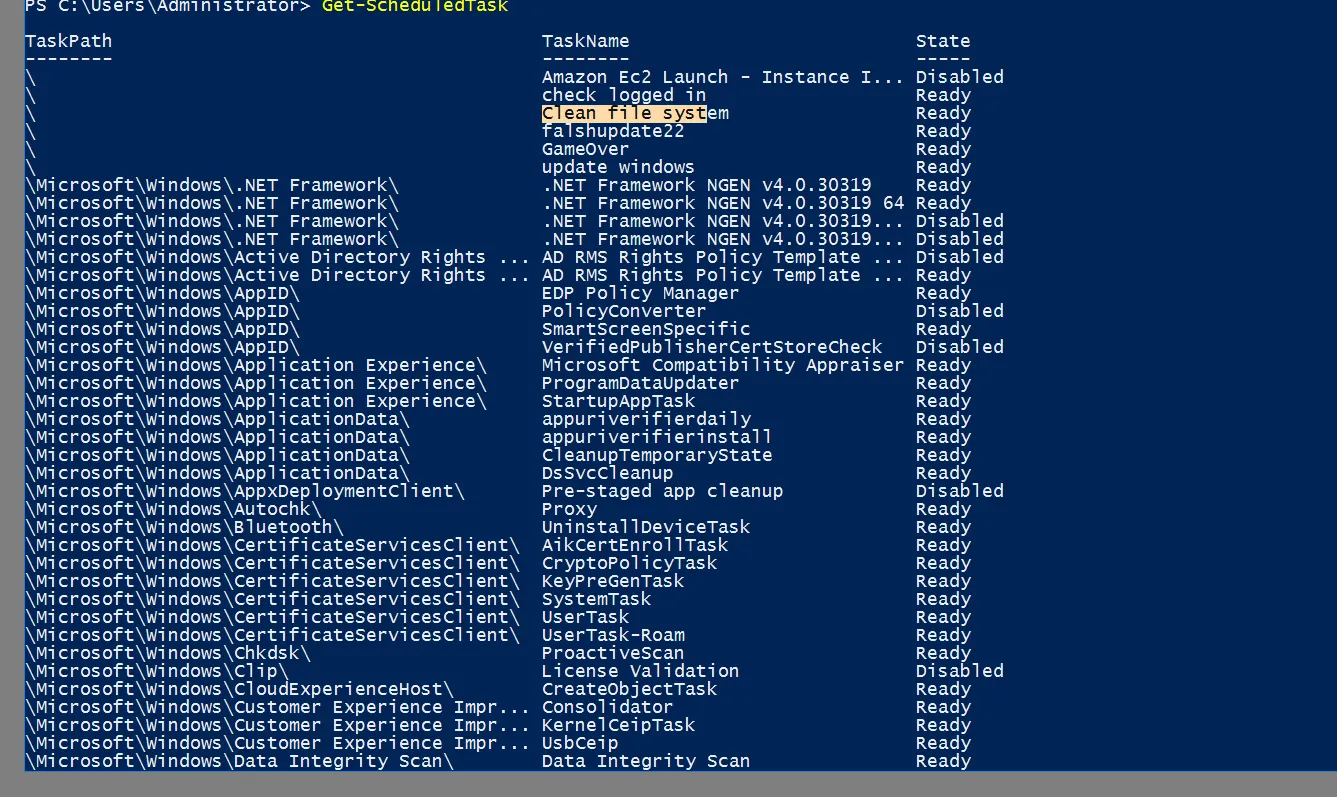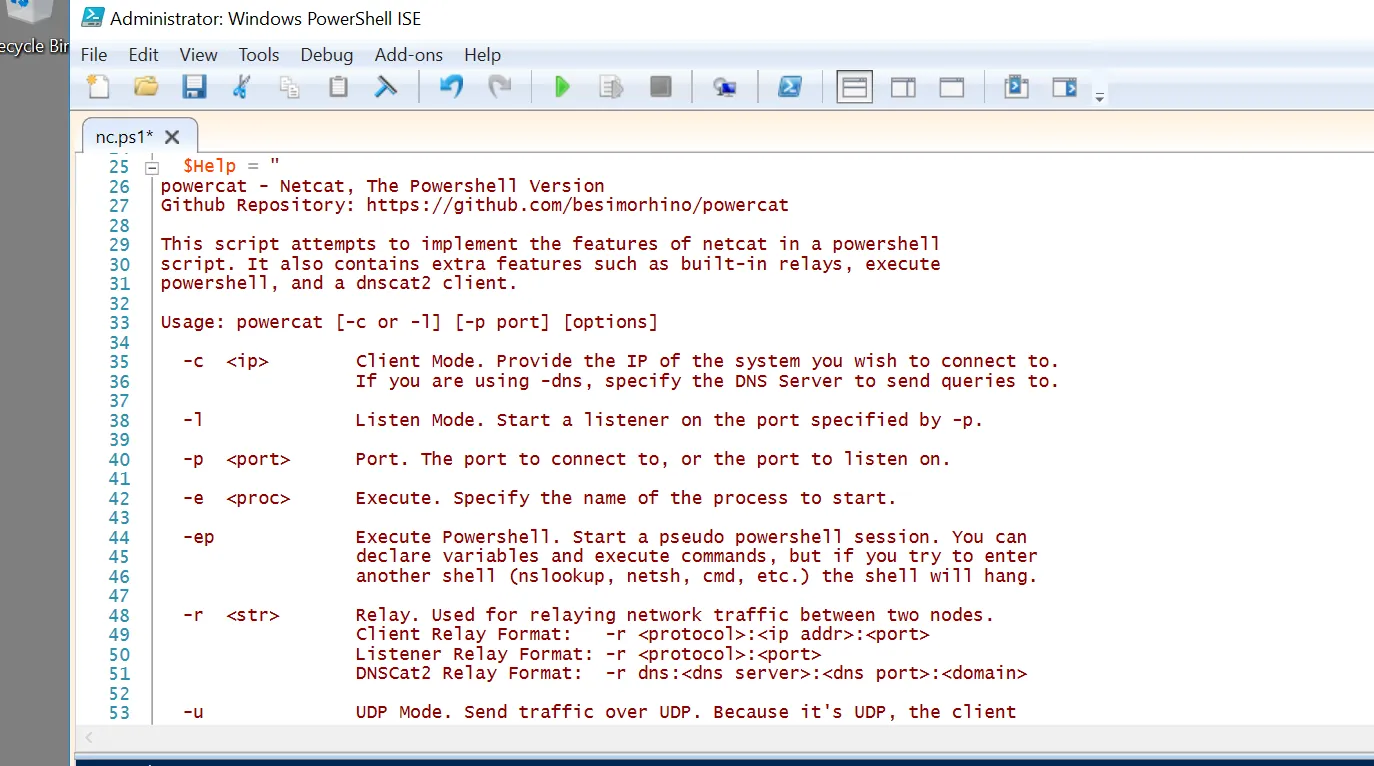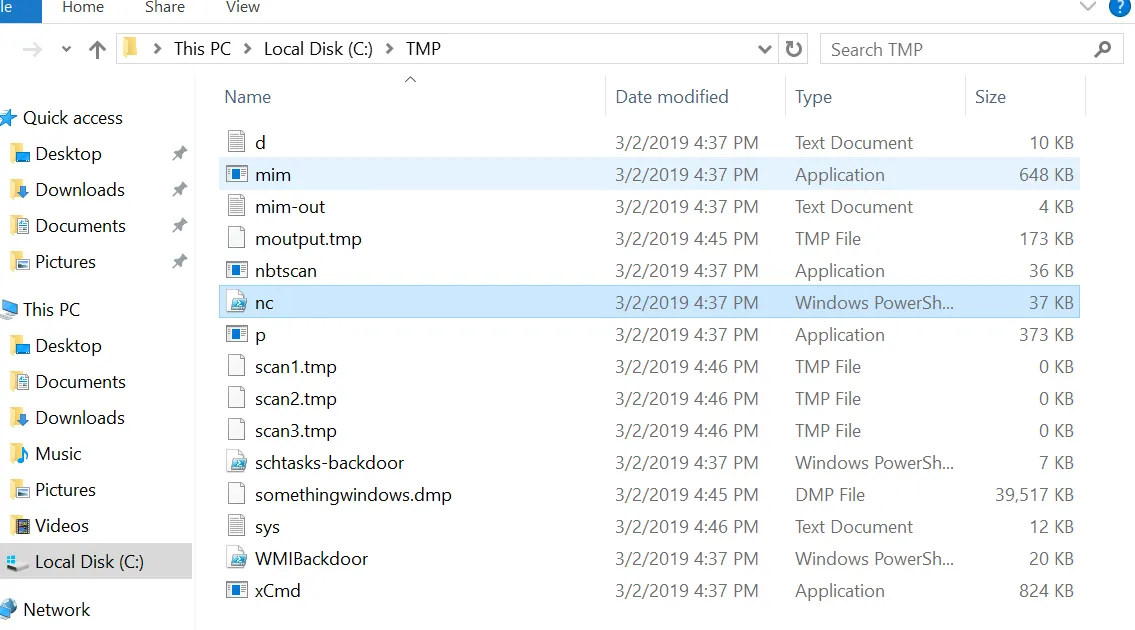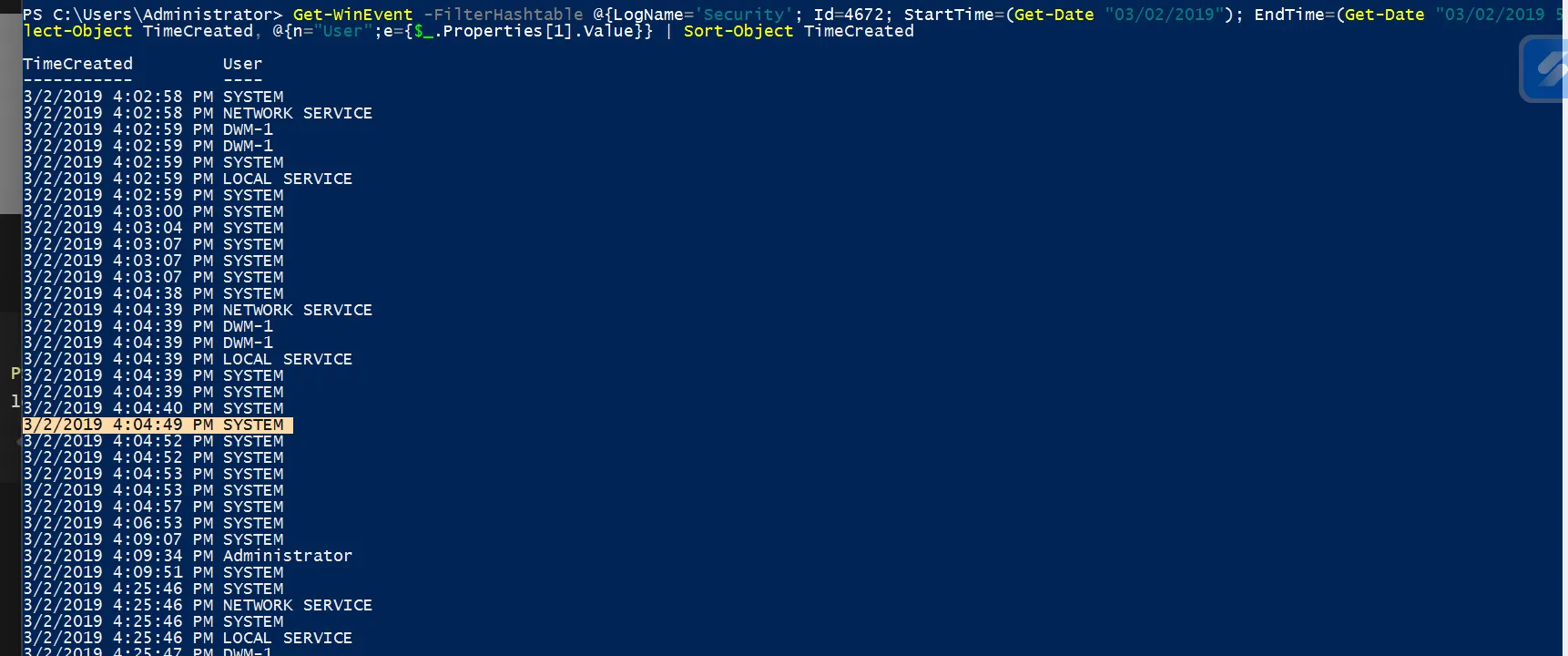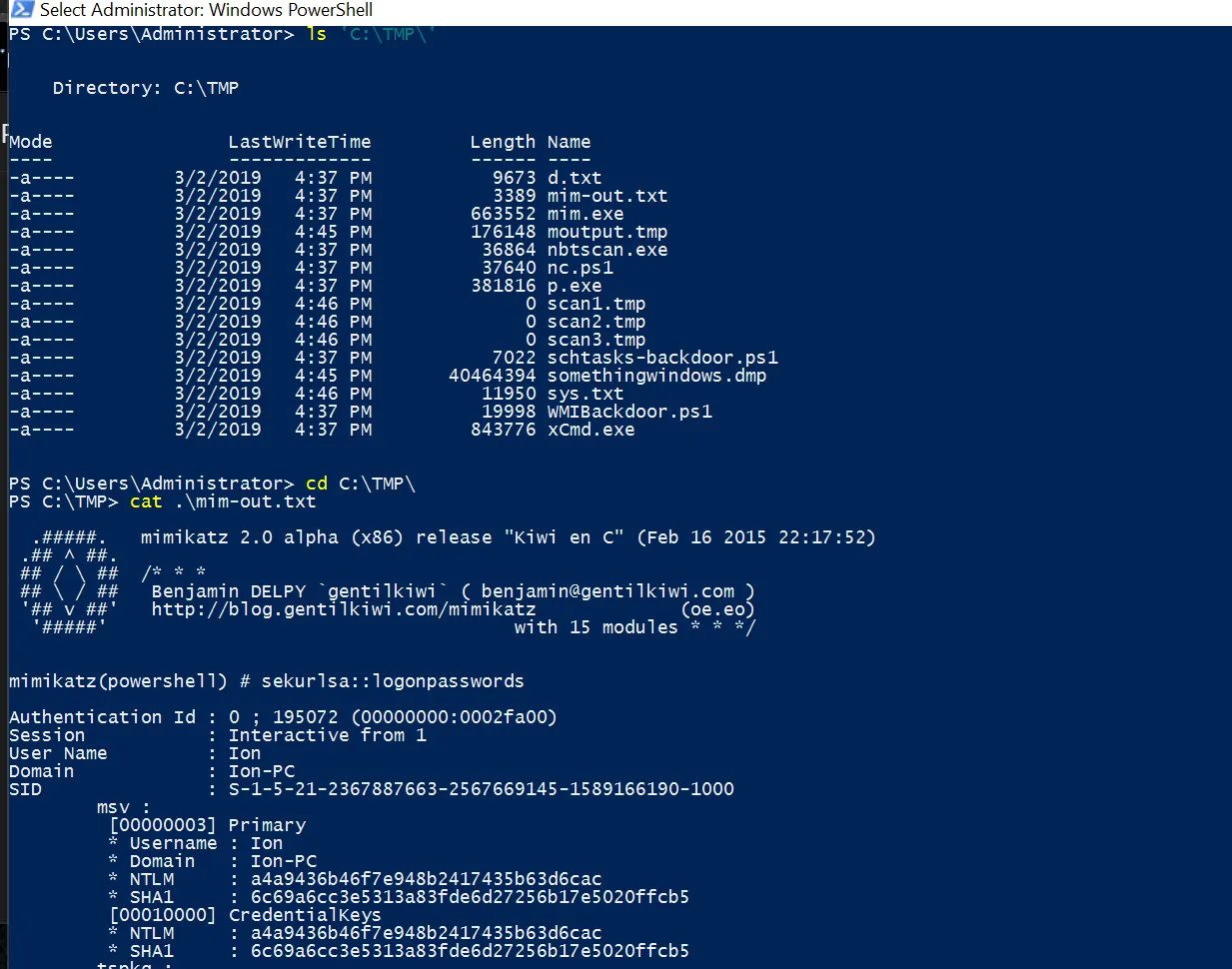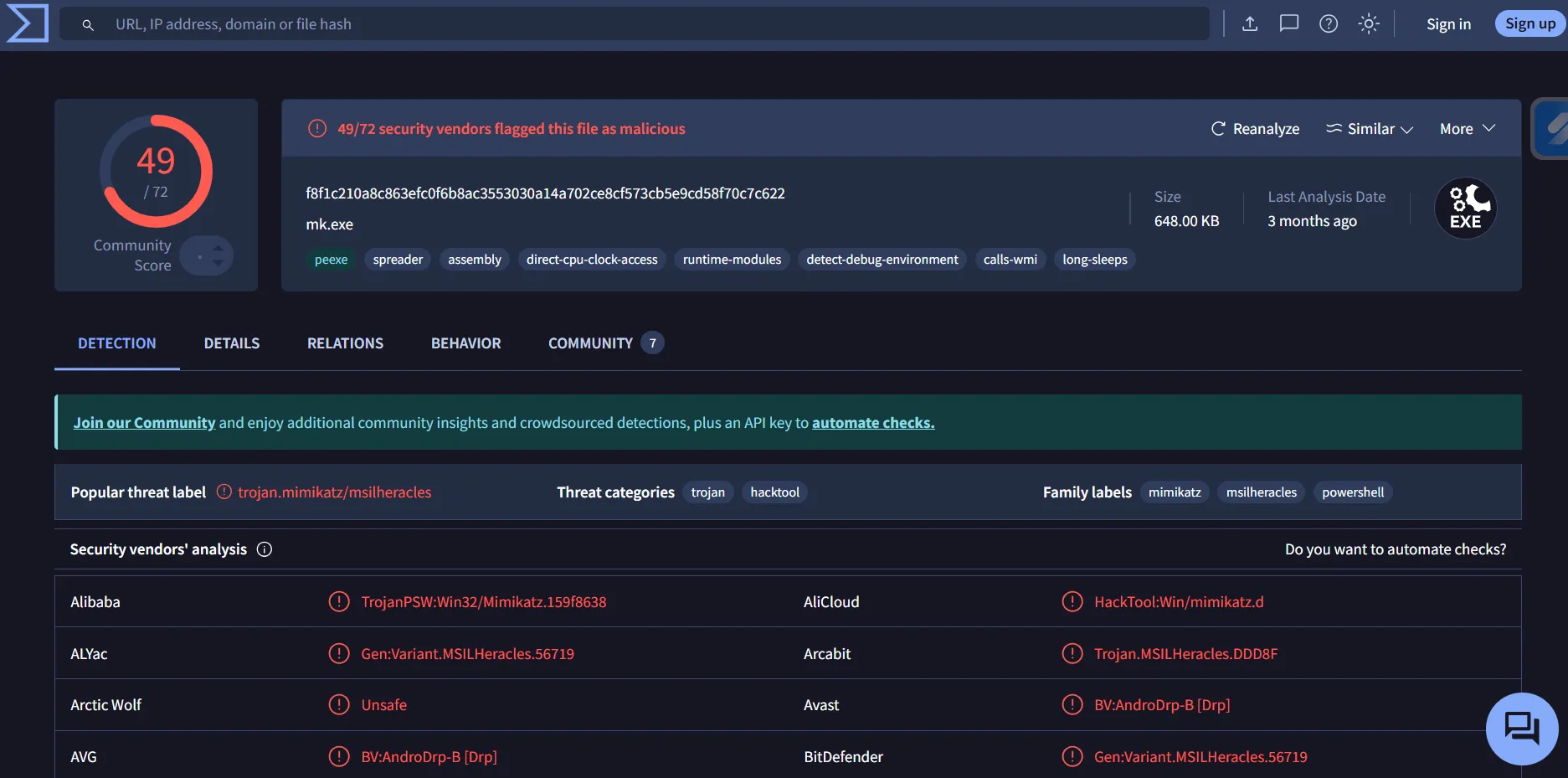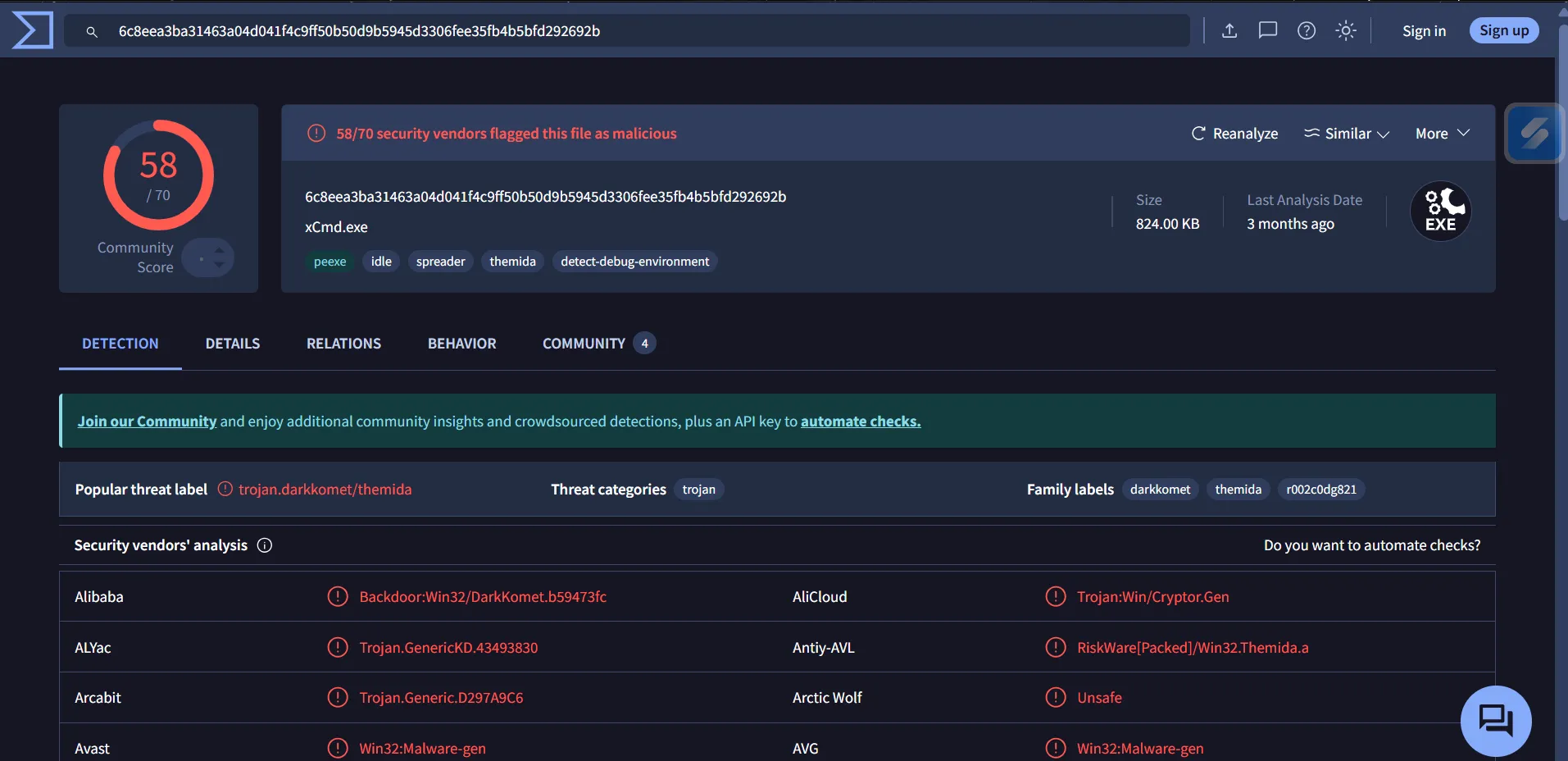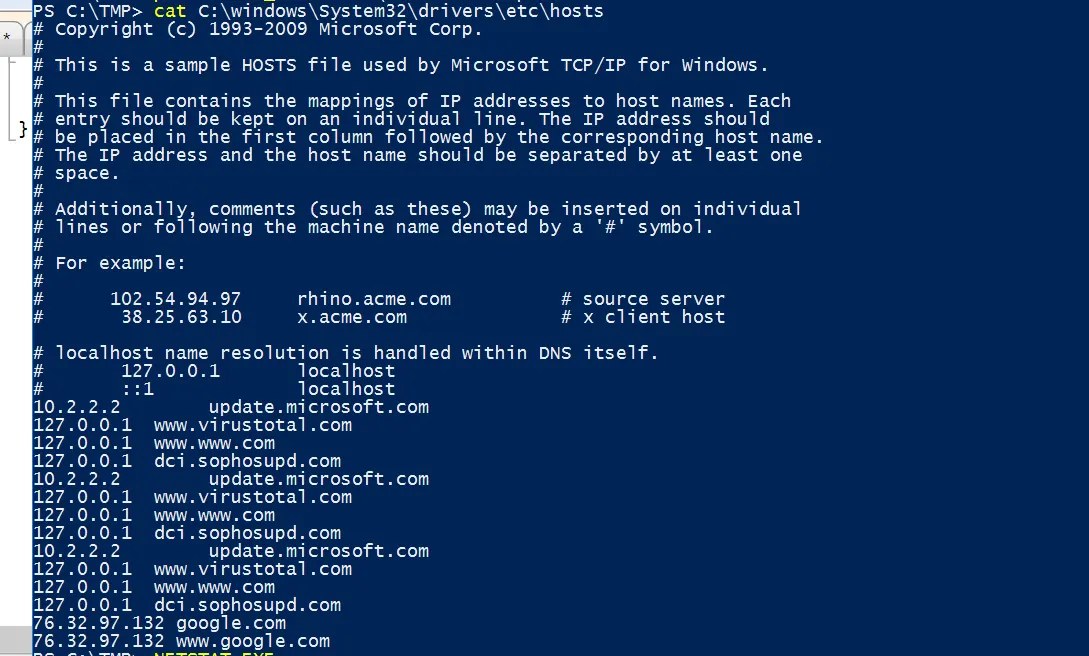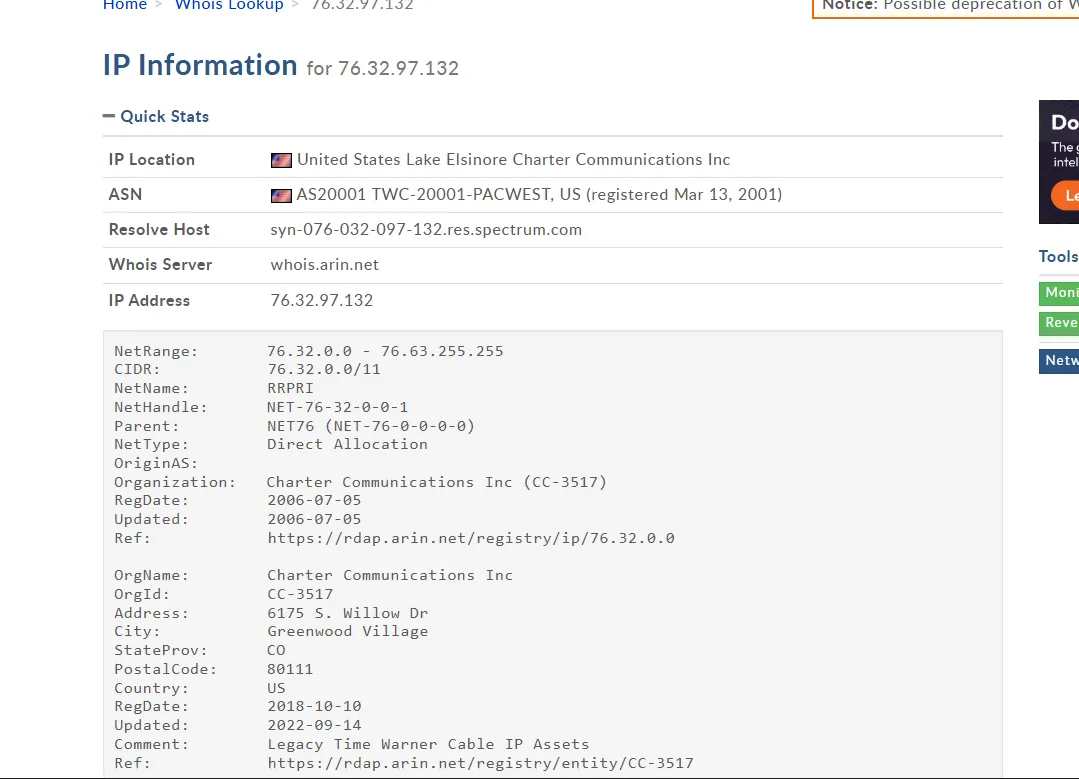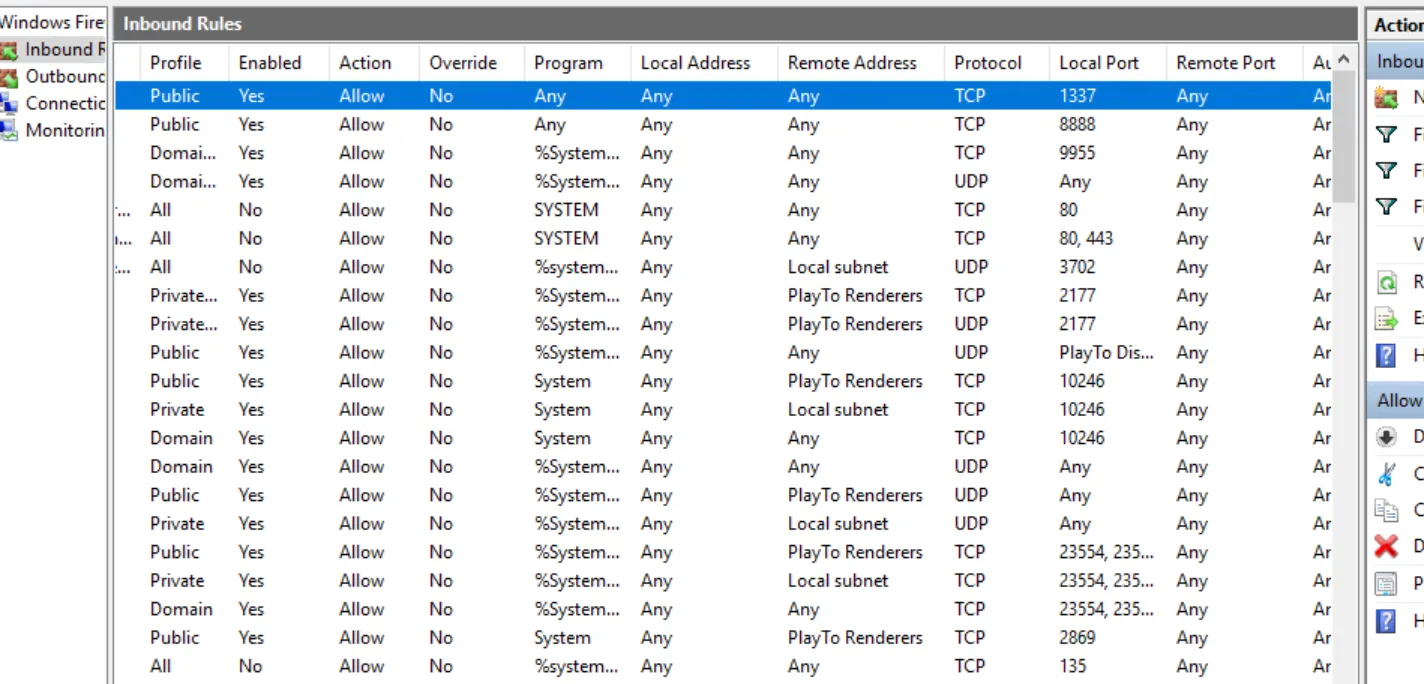TryHackMe: Investigating Windows Write-up
Introduction
Challenge Link: Investigating Windows
Investigate a compromised Windows machine to determine the actions taken by the attacker
System Information
View the system inforamtion that we are investigating
1
Get-ComputerInfo
Windows Product Name: Windows Server 2016 Datacenter
User Activity
To show the current logged-in user, type this command
1
query user
The next question is: When did John last log into the system? To answer this question, we have to search in the Security Event logs for event ID 4624 (An account was successfully logged on) and filter the message field for the user John.
1
Get-EventLog Security -InstanceId 4624 | Where-Object { $_.Message -Match "John"} | Select-Object TimeCreated, Message | fl
The last time John logged into the system was at 03/02/2019 5:48:32 PM, with logon type 2 (Interactive logon). The Administrator account initiated a new logon to the John account.
Identifying Persistence
Checking the startup registry for persistence programs
1
2
3
4
5
6
7
8
9
PS C:\Users\Administrator> Get-ItemProperty -Path "HKLM:\SOFTWARE\Microsoft\windows\currentversion\run"
UpdateSvc : C:\TMP\p.exe -s \\10.34.2.3 'net user' > C:\TMP\o2.txt
PSPath : Microsoft.PowerShell.Core\Registry::HKEY_LOCAL_MACHINE\SOFTWARE\Microsoft\windows\currentversion\run
PSParentPath : Microsoft.PowerShell.Core\Registry::HKEY_LOCAL_MACHINE\SOFTWARE\Microsoft\windows\currentversion
PSChildName : run
PSDrive : HKLM
PSProvider : Microsoft.PowerShell.Core\Registry
Anything that is listed under the Run key of the HKEY_LOCAL_MACHINE (HKLM) will run for all users at every system boot. Here in the entry UpdateSvc it launches p.exe with instruction to connect to an internal IP (10.34.2.3 ) and run net user , dumping account information into C:\TMP\o2.txt
Privilege and Account Management
Check who has privileged access.
1
2
3
4
5
6
7
8
PS C:\Users\Administrator> Get-LocalGroupMember -Group Administrators
ObjectClass Name PrincipalSource
----------- ---- ---------------
User EC2AMAZ-I8UHO76\Administrator Local
User EC2AMAZ-I8UHO76\Guest Local
User EC2AMAZ-I8UHO76\Jenny Local
1
2
3
4
5
6
7
8
9
10
11
12
13
14
15
16
17
18
19
20
21
22
23
24
25
26
27
PS C:\Users\Administrator> net user Jenny
User name Jenny
Full Name Jenny
Comment
User's comment
Country/region code 000 (System Default)
Account active Yes
Account expires Never
Password last set 3/2/2019 4:52:25 PM
Password expires Never
Password changeable 3/2/2019 4:52:25 PM
Password required Yes
User may change password Yes
Workstations allowed All
Logon script
User profile
Home directory
Last logon Never
Logon hours allowed All
Local Group Memberships *Administrators *Users
Global Group memberships *None
The command completed successfully.
Guest and Jenny are in the Administrators group.
Scheduled Tasks
Another way to check for persistence is by viewing scheduled tasks and identifying unusual ones. Upon starting the machine, I observed a task that triggered every five minutes, executing mim.exe from the TMP folder.
Since we don’t know yet the name of the task, search through the tasks for a task that executes mim.exe
1
2
3
4
5
PS C:\TMP> Get-ScheduledTask | Where-Object { $_.Actions.Execute -like "*mim.exe*" } | Select-Object TaskName, State, Actions
TaskName State Actions
-------- ----- -------
GameOver Ready {MSFT_TaskExecAction}
The task name is GameOver. Query this task for additional info
1
2
3
4
5
6
7
8
9
10
11
12
13
14
15
16
17
18
19
20
21
22
23
24
25
26
27
28
29
30
31
32
PS C:\TMP> schtasks.exe /query /tn "GameOver" /v /fo list
Folder: \
HostName: EC2AMAZ-I8UHO76
TaskName: \GameOver
Next Run Time: 9/23/2025 11:42:00 AM
Status: Ready
Logon Mode: Interactive only
Last Run Time: 9/23/2025 11:37:00 AM
Last Result: -1073741510
Author: EC2AMAZ-I8UHO76\Administrator
Task To Run: C:\TMP\mim.exe sekurlsa::LogonPasswords > C:\TMP\o.txt
Start In: N/A
Comment: N/A
Scheduled Task State: Enabled
Idle Time: Disabled
Power Management: Stop On Battery Mode, No Start On Batteries
Run As User: Administrator
Delete Task If Not Rescheduled: Disabled
Stop Task If Runs X Hours and X Mins: 72:00:00
Schedule: Scheduling data is not available in this format.
Schedule Type: One Time Only, Minute
Start Time: 4:47:00 PM
Start Date: 3/2/2019
End Date: N/A
Days: N/A
Months: N/A
Repeat: Every: 0 Hour(s), 5 Minute(s)
Repeat: Until: Time: None
Repeat: Until: Duration: Disabled
Repeat: Stop If Still Running: Disabled
Other tasks run from the same location as the GameOvertask, one of them is a task named Clean File system
Query this task
1
2
3
4
5
6
7
8
9
10
11
12
13
14
15
16
17
18
19
20
21
22
23
24
25
26
27
28
29
30
31
PS C:\Users\Administrator> schtasks.exe /query /tn "Clean File System" /v /fo list
Folder: \
HostName: EC2AMAZ-I8UHO76
TaskName: \Clean File System
Next Run Time: 9/22/2025 4:55:17 PM
Status: Ready
Logon Mode: Interactive only
Last Run Time: 9/22/2025 9:57:13 AM
Last Result: -2147020576
Author: EC2AMAZ-I8UHO76\Administrator
Task To Run: C:\TMP\nc.ps1 -l 1348
Start In: N/A
Comment: A task to clean old files of the system
Scheduled Task State: Enabled
Idle Time: Disabled
Power Management: Stop On Battery Mode, No Start On Batteries
Run As User: Administrator
Delete Task If Not Rescheduled: Disabled
Stop Task If Runs X Hours and X Mins: 72:00:00
Schedule: Scheduling data is not available in this format.
Schedule Type: Daily
Start Time: 4:55:17 PM
Start Date: 3/2/2019
End Date: N/A
Days: Every 1 day(s)
Months: N/A
Repeat: Every: Disabled
Repeat: Until: Time: Disabled
Repeat: Until: Duration: Disabled
Repeat: Stop If Still Running: Disabled
This task runs a PowerShell script from the TMP folder and passes-l parameter, which is, according to the script, starts a listener on port 1348.
Compromise Timeline
From the indicators we gather so far. The tasks named “Clean File System” and “GameOver”, along with John’s account login, and the TMP folder creation time, all point to → 03/02/2019
Question 11 asks when Windows first assigned a special privilege to a new logon during the compromise. To investigate this, I filtered the Security log for Event ID 4672 (“Special privileges assigned to new logon”) and restricted the results to the compromised date:
1
2
PS C:\Users\Administrator> Get-WinEvent -FilterHashtable @{LogName='Security'; Id=4672; StartTime=(Get-Date "03/02/2019"); EndTime=(Get-Date "03/02/2019 5:46:03 PM")} | Se
lect-Object TimeCreated, @{n="User";e={$_.Properties[1].Value}} | Sort-Object TimeCreated
Even with this filter, there were still many events to review. The hint indicated a timestamp ending with :49 seconds, which helped narrow it down to only one event.
The event happened on 3/2/2019 4:04:49 PM
1
2
3
4
5
6
7
8
9
10
11
12
13
14
15
16
17
18
19
20
21
22
23
24
25
26
PS C:\Users\Administrator> Get-WinEvent -FilterHashtable @{LogName='Security'; Id=4672; StartTime=(Get-Date "03/02/2019 4:04:49 PM"); EndTime=(Get-Date "03/02/2019 4:04:50
PM")} | fl
TimeCreated : 3/2/2019 4:04:49 PM
ProviderName : Microsoft-Windows-Security-Auditing
Id : 4672
Message : Special privileges assigned to new logon.
Subject:
Security ID: S-1-5-18
Account Name: SYSTEM
Account Domain: NT AUTHORITY
Logon ID: 0x3E7
Privileges: SeAssignPrimaryTokenPrivilege
SeTcbPrivilege
SeSecurityPrivilege
SeTakeOwnershipPrivilege
SeLoadDriverPrivilege
SeBackupPrivilege
SeRestorePrivilege
SeDebugPrivilege
SeAuditPrivilege
SeSystemEnvironmentPrivilege
SeImpersonatePrivilege
SeDelegateSessionUserImpersonatePrivilege
Credentials Access
Moving our attention back to the TMP folder, as we already found in the Schedule Task section, a task runs every five minutes named GameOver that executes mim.exe and dump the result into C:\TMP\o.txt
From the output of the mim-out.txt, it is clear that the attacker used the Mimikatz tool to dump the user credentials. Calculate the executable files and do a hash lookup on Virustotal
1
2
3
4
5
6
7
8
9
PS C:\TMP> Get-FileHash -Algorithm MD5 .\mim.exe
Algorithm Hash Path
--------- ---- ----
MD5 060CA40A61E783E71142BC93C0BAF850 C:\TMP\mim.exe
PS C:\TMP> Get-FileHash -Algorithm MD5 .\xCmd.exe
Algorithm Hash Path
--------- ---- ----
MD5 27AEE7F36B4099E8DB3E3D3898474196 C:\TMP\xCmd.exe
PS C:\TMP>
The mim.exe file is confirmed to be a Mimikatz tool.
The other executable confirmed to be a RAT and labeled as DarkComet, which is a tool that allows the user to control the compromised system with a graphical user interface
Network Inforamtion
Checking the hosts file for the C2 server IPs
Upon inspecting the IP of the associated host name “google.com”, the result showed that this IP does not belong to the Google IP addresses, but to another hostname.
This technique is called Hosts file tampering, modifying C:\Windows\System32\drivers\etc\hosts to map google.com → 76.32.97.132 forces the local resolver to return that IP for applications that use the OS resolver (browsers, ping, etc.). This is a local override. Here is an IP lookup for Google.com hostname
1
2
3
4
5
6
7
8
9
10
11
12
13
14
15
16
17
18
19
20
21
22
23
24
25
26
27
28
29
30
31
32
33
34
35
36
37
38
39
PS C:\TMP> nslookup.exe google.com
Server: ip-10-0-0-2.eu-west-1.compute.internal
Address: 10.0.0.2
Non-authoritative answer:
Name: google.com
Addresses: 2a00:1450:400b:c00::8b
2a00:1450:400b:c00::64
2a00:1450:400b:c00::65
2a00:1450:400b:c00::66
209.85.203.101
209.85.203.113
209.85.203.139
209.85.203.100
209.85.203.102
209.85.203.138
PS C:\TMP> nslookup.exe www.google.com
Server: ip-10-0-0-2.eu-west-1.compute.internal
Address: 10.0.0.2
Non-authoritative answer:
Name: www.google.com
Addresses: 2a00:1450:400b:c02::68
2a00:1450:400b:c02::67
2a00:1450:400b:c02::63
2a00:1450:400b:c02::93
172.253.116.106
172.253.116.147
172.253.116.99
172.253.116.103
172.253.116.105
172.253.116.104
PS C:\TMP> nslookup 76.32.97.132
Server: ip-10-0-0-2.eu-west-1.compute.internal
Address: 10.0.0.2
Name: syn-076-032-097-132.res.spectrum.com
Address: 76.32.97.132
nslookup performs DNS queries directly to the configured DNS server and bypasses the OS hosts-file resolution. That’s why nslookup google.com shows Google’s real IPs while the hosts file maps it to a different IP.
For the last question, what was the last port the attacker opened? Check the firewall inbound added rules for any suspicious local ports
An open local port was found in the inbound firewall rules, with the rule name Allow outside connections for development for port 1337.
